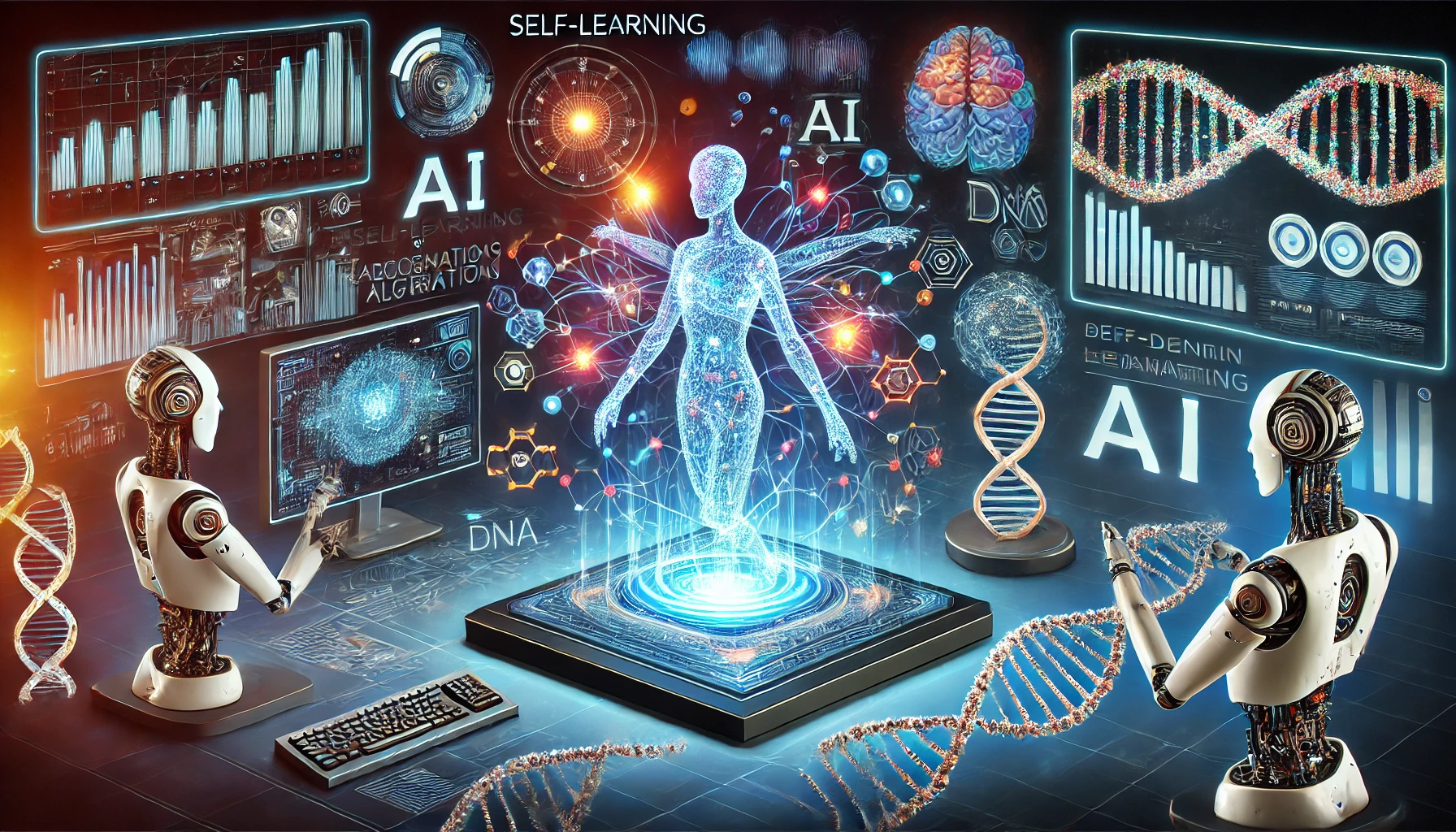A Beginner's Guide to Agenetic AI: The Next Step in Artificial Intelligence
Artificial Intelligence (AI) is evolving rapidly, and one of the latest advancements in this field is Agenetic AI. If you have heard about AI that learns and improves by itself, then you are already familiar with the core idea behind Agenetic AI. This concept takes AI beyond traditional programming by allowing it to evolve, adapt, and think more like a human brain. But what exactly is Agenetic AI, and how does it work? Let’s break it down in simple terms.
What is Agenetic AI?
Agenetic AI is an advanced form of artificial intelligence that can modify its own algorithms without human intervention. Unlike traditional AI, which follows pre-programmed rules, Agenetic AI can learn, evolve, and improve based on its experiences. This means it can adapt to new situations and make decisions just like living organisms evolve over time.
The term “Agenetic” comes from “Adaptive” and “Genetic.” The idea is inspired by nature, where organisms evolve to survive in changing environments. Similarly, Agenetic AI adjusts itself to solve problems more efficiently without being explicitly programmed for each new challenge.
How Does Agenetic AI Work?
Agenetic AI operates using the following key principles:
1. Self-Learning
Traditional AI models are trained on large datasets before they can make predictions. Agenetic AI, however, learns continuously from new data and adjusts itself in real time.
2. Evolutionary Algorithms
It uses algorithms inspired by biological evolution, such as:
Mutation – Making small changes to improve performance.
Selection – Keeping the best solutions and discarding weaker ones.
Crossover – Combining good solutions to create even better ones.
3. Self-Modification
Agenetic AI can rewrite its own programming to become more efficient. If it encounters a problem it has never seen before, it can create new methods to solve it without human help.
4. Adapting to Environment
It continuously analyzes its surroundings and makes decisions based on what it learns, much like how animals adapt to new environments.
Real-Life Examples of Agenetic AI
Now that we understand what Agenetic AI is, let’s look at some examples where this technology is making an impact.
1. Autonomous Robots
Robots powered by Agenetic AI can learn from their mistakes and improve their skills without human intervention. For example:
Delivery robots can adjust their paths if they encounter unexpected obstacles.
Factory robots can improve efficiency by figuring out better ways to assemble products.
2. Smart Traffic Systems
Agenetic AI is being used to optimize city traffic in real time. Instead of relying on pre-set timing, smart traffic lights can analyze live traffic flow and adjust signals to reduce congestion. Over time, the system gets better at predicting and managing traffic patterns.
3. Healthcare and Drug Discovery
Medical AI systems with Agenetic capabilities can find new treatments for diseases faster than traditional methods. They do this by:
Studying genetic patterns and predicting possible cures.
Creating new drugs through trial-and-error, just like how evolution works.
4. Video Game AI
In modern video games, Agenetic AI can create intelligent enemies that adapt to players’ strategies. This makes gaming more challenging and realistic since enemies can change tactics instead of following a predictable pattern.
5. Cybersecurity
Hackers are always coming up with new ways to breach security. Agenetic AI can detect new types of cyber threats by learning from past attacks and evolving its defenses accordingly.
Advantages of Agenetic AI
Agenetic AI has several benefits compared to traditional AI models:
Self-Improvement – It continuously gets better without human intervention.
Faster Decision Making – It can adapt instantly to changing conditions.
Solves Unpredictable Problems – It can handle scenarios that were not initially programmed.
More Efficient and Cost-Effective – Reduces the need for constant human updates and maintenance.
More Human-Like Intelligence – It mimics how humans think and learn over time.
Challenges and Concerns
While Agenetic AI is powerful, it also comes with challenges:
Unpredictability – Since it evolves on its own, we can’t always predict how it will behave.
Ethical Concerns – If AI can rewrite its own rules, how do we ensure it remains aligned with human values?
Security Risks – Hackers could potentially manipulate Agenetic AI for malicious purposes.
High Computational Power – Requires huge amounts of processing power to function effectively.
Scientists and engineers are working on solutions to make Agenetic AI more transparent and controllable to prevent unintended consequences.
Future of Agenetic AI
The future of Agenetic AI is full of exciting possibilities. Some areas where we might see significant progress include:
Fully Autonomous AI Assistants – AI that can manage entire businesses or research projects without human input.
Advanced Space Exploration – AI-powered robots that can explore distant planets and evolve based on new discoveries.
Personalized AI for Individuals – AI that adapts to each person’s needs, from learning styles to healthcare plans.
Next-Generation Smart Cities – Entire cities that self-optimize energy use, traffic management, and public safety.
As AI technology continues to grow, Agenetic AI could become a game-changer in nearly every industry, making systems smarter, faster, and more efficient.
Conclusion
Agenetic AI represents the next frontier in artificial intelligence, allowing machines to learn, evolve, and adapt just like living organisms. From self-improving robots to smarter healthcare solutions, this technology has the potential to revolutionize the way we interact with the world.
However, with great power comes great responsibility. As we develop Agenetic AI, it is essential to ensure ethical and secure implementations to prevent misuse. If managed correctly, this new form of AI could lead to a future where technology truly thinks and grows alongside us.






